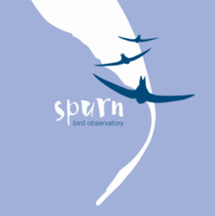Weekly birding round-up: 13 - 19 September 2017
It’s the time of year when birders get increasingly obsessed by the weather – our birding fortunes during migration rise and fall with which direction the wind’s coming from, and how closely packed and far-reaching those isobars are.
That’s an obsession that builds on the general British appetite for talking about the weather – an appetite that’s been fed these past couple of years by the decision to start giving our storms names. Apparently the Met Office thought we’d relate better to bad weather if they humanised it, and become more “engaged, informed and prepared” – clearly the Met Office had never met a birder in autumn…
All of which musings come from the arrival this past week of the first named storm of the new storm-naming period – Aileen rocked up overnight on 12th into 13th with some snorty 70mph westerlies across the country, followed by a spell of north-westerlies. As the week progressed some easterlies finally managed to, briefly, kiss the east coast - so something from all quarters this week…
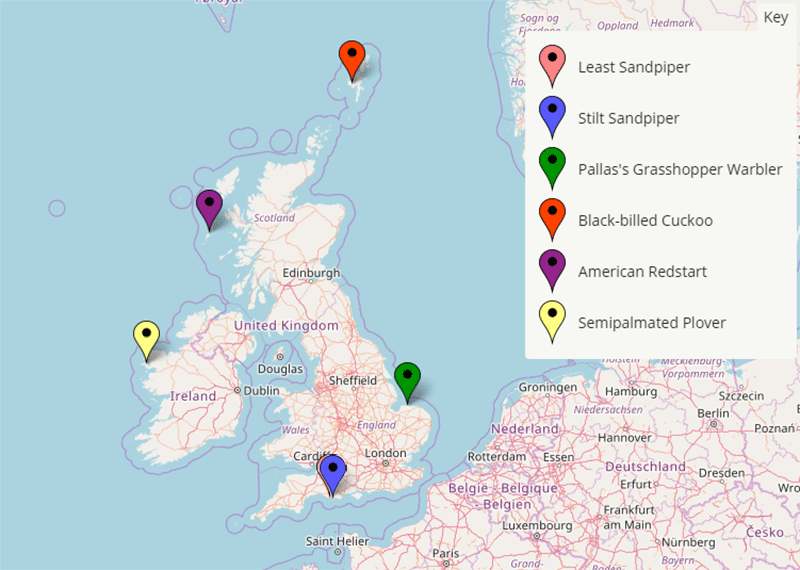
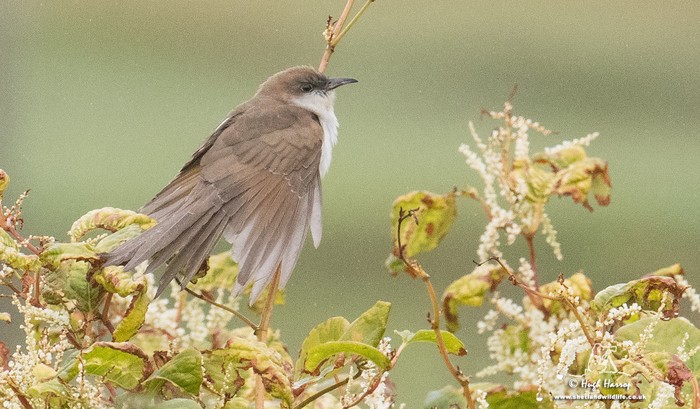
Well, I signed off last week hoping for some more American warblerage in the wake of the American Redstart - certainly the auguries looked good for something of a westerly origin this week. For all the warbler bit was off the mark, the American mega prediction was bang on the money - what I certainly didn’t predict was that it would be rocking up in Shetland.
Happily, the week’s star bird proved to be the most obliging of things – rare, certainly, but, most importantly for the species in question, still alive - for, as we all know, Coccyzus cuckoos generally find transatlantic flights take it out of them somewhat – we’ve all seen them, either in the flesh or in photos of yore, sat with their wings dejectedly hanging at their sides. Not so the Black-billed Cuckoo found on 18th on Shetland’s west coast at the remote croft at Dale of Walls. This bird really couldn’t have made landfall a moment too soon after completing the crossing from North America – but for those quick responders who rushed to see it on Monday lunchtime the bird still had plenty of oomph left in it, spanging from bush to bush.
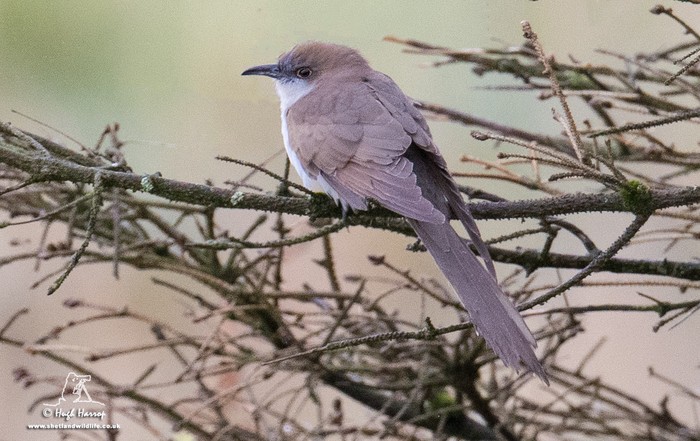
So far, so good, though sadly what it will find to sustain it in Shetland is probably a subject best skirted over. There’s unlikely to be a happy ending in all of this for the cuckoo in question, but for the birders who saw it… well, selfishly, this remains a major British tick for many nowadays.
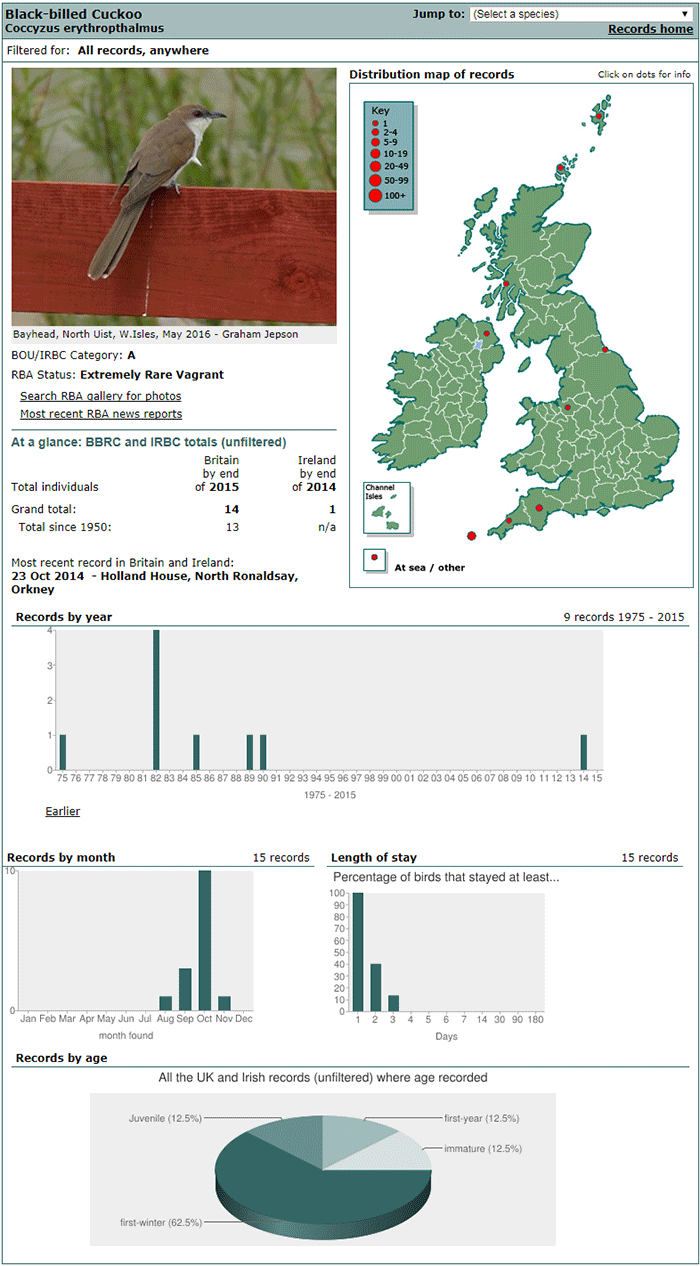
Yep, Black-billed Cuckoo was, in a very real sense, as much of a blocker as American Redstart until the individual that spent ten days during spring 2016 on North Uist (Western Isles) near Bayhead.
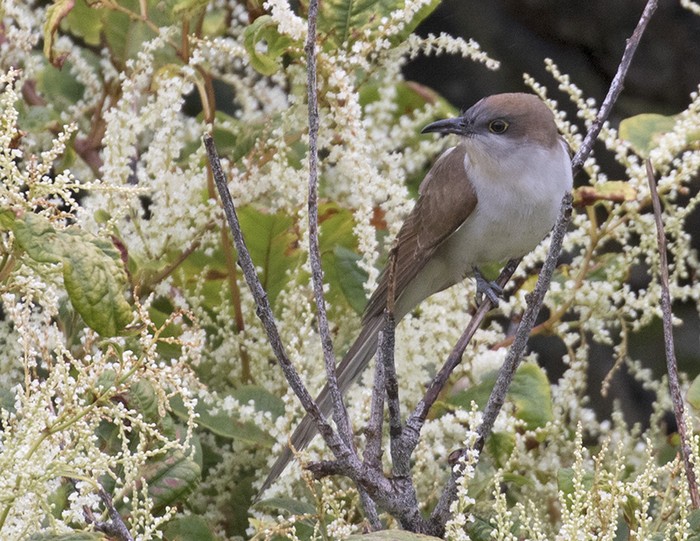
Before that, if we discount the previous three records (North Ronaldsay in 2014 – available briefly to the finders alone; Scilly in 1990 – found, predictably, dead; and somewhere in mid-North Sea on an oil rig in 1989) the last bird to be even remotely crowd-pleasing was that on St Mary’s (Scilly) on 12th October 1985 and, before that, the best of the lot being one that lasted a full, and to that point unprecedented, three days on St Mary’s in late October 1982.
Before being found dead, obviously.
Spool back before then and it’s a litany of death - Black-billed Cuckoos found, for the most part, already dead or in the process of falling off the twig. Like I said, they don’t do so well over here…
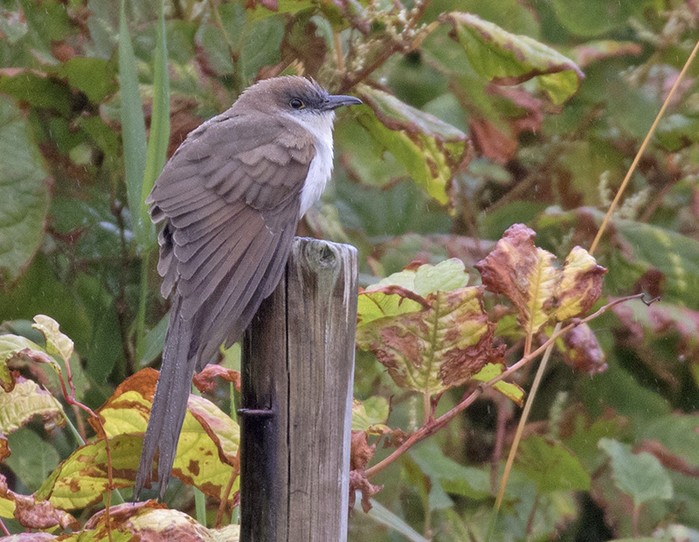
Fortune is said to favour the brave, but in the case of Black-billed Cuckoo it also, clearly, favours the quick to respond – the thirty or so birders who quickly assembled at Dale of Walls being treated to intermittent views of this most sought-after cuckoo on the British list – the closely-related Yellow-billed Cuckoo outnumbering Black-billed by a considerable margin, with a full 64 previous British records to the end of 2015.
One of the past 15 British records was in Shetland, but for this we need to peer back into the mists of time to 11th October 1953 where one was picked up exhausted on Foula and, naturally, had died by the following morning. So this week’s bird was, for those who keep a Shetland list (and a number do) an even bigger deal. And an opportunity to see this uber-rare American sharing a bush with Yellow-browed Warbler in another of those pleasing east-meets-west moments…
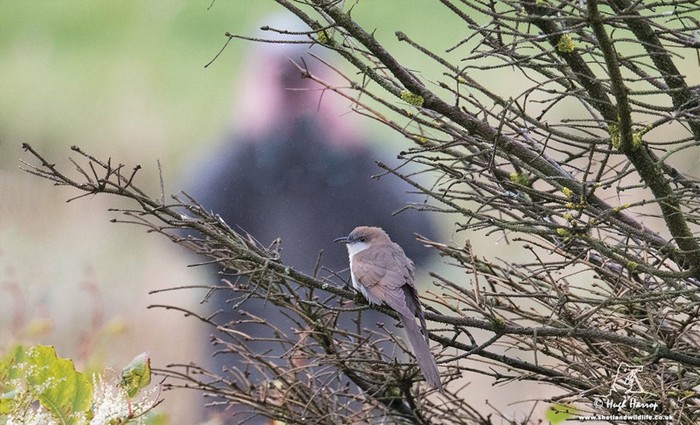
So, two weeks into my latest RBA Rarity Round Up tenure and we have two high calibre North American birds under our belt. Whatever next, I wonder?

Firmly unblocked this week for anyone with the inclination, the time and the budget to do so was the settled female American Redstart that remained on Barra at Eoligarry until 18th.

I could lavish this beauty with hyperbole but, really, words don’t do this one justice. It’s simply a gorgeous bird, and I sincerely hope we don’t have to wait another 30 years for the next one.
We should, possibly, have seen this one coming – after all, the Azores had landed a trio of Semipalmated Plovers the previous week in addition to a trio of Semipalmated Sandpipers - we, meanwhile, had had the sandpipers turn up, if not en masse, then in fair numbers… so perhaps, with other rare Nearctic shorebirds being found throughout Britain and Ireland in the past week or so, a Semipalmated Plover was just a matter of time?
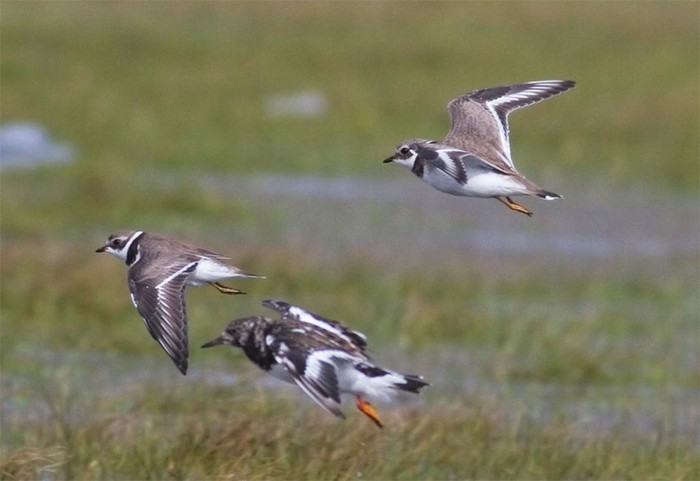
Things are never quite that simple though, are they… We waited almost twenty years from Britain’s first record to its second, and thereafter have enjoyed just a handful of further birds – reflecting, one suspects, more attention paid to plovers than a genuine upsurge in actual numbers occurring.
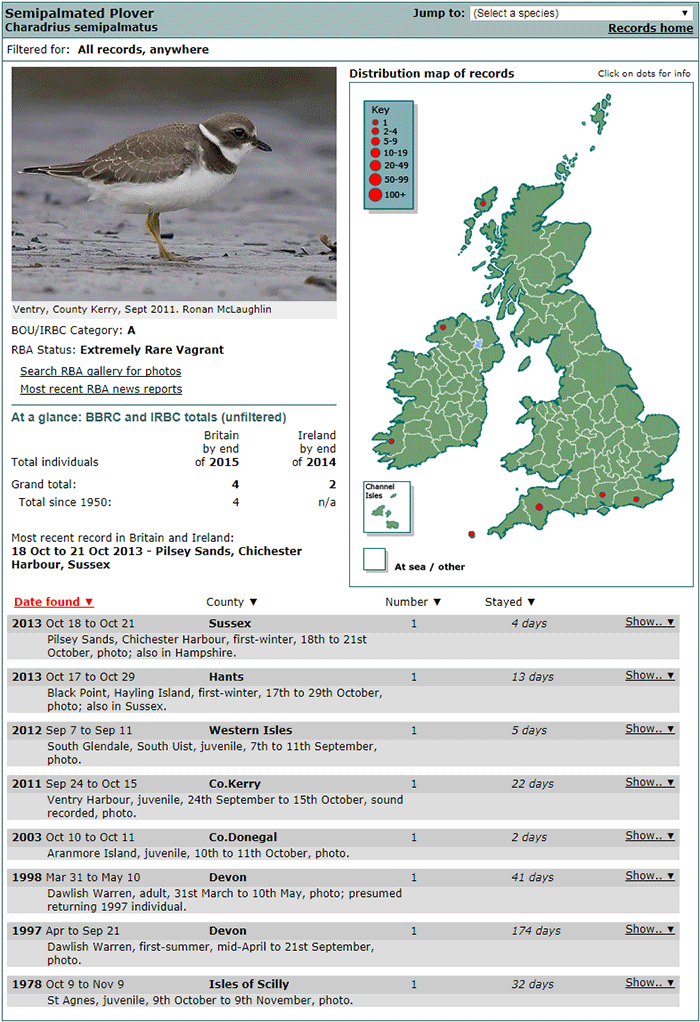
Massive respect, therefore, to anyone who puts in the hours and effort concerned to turn up a British or Irish Semipalmated Plover - and, in particular, the finder of this week’s latest offering, an adult seen on Achill Island (Co.Mayo) on 13th-17th. Ireland’s first was found as recently as 2003 – and their last were three records in 2016: at Tacumshin (Co.Wexford) in the summer, and in Co.Galway on Ardmore Strand and in Co.Mayo on Achill Island during October 2016.
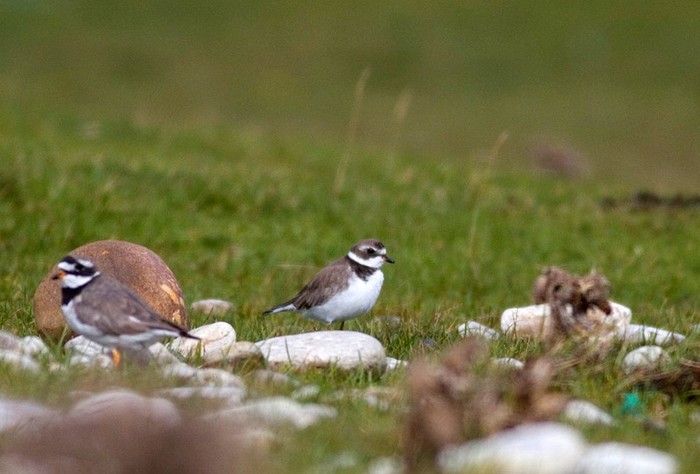
The latter records were juvenile birds – and, looking back to the 1997 and 1998 records from Devon, the species appears to have form for returning to former sites in subsequent years. Could this latest adult Semipalmated Plover not, in fact, be a newly deposited transatlantic vagrant but, instead, be of the 2016 vintage after all?
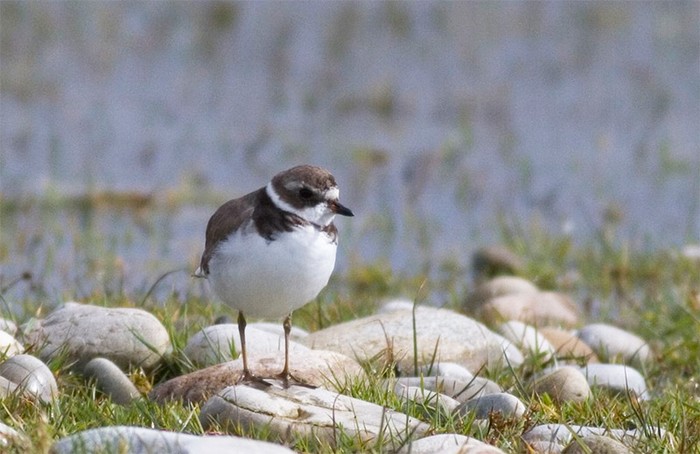
Speaking of waiting, English birders the length of the east coast have displayed remarkable patience and tenacity in their wait for records of our rarer Locustellas whilst, for years, Shetland has been practically knee-deep in autumnal Lanceolated and Pallas’s Grasshopper Warblers. Honestly, there are times you’re beating the damn things off with a stick up here…
(Joking, obvs…)
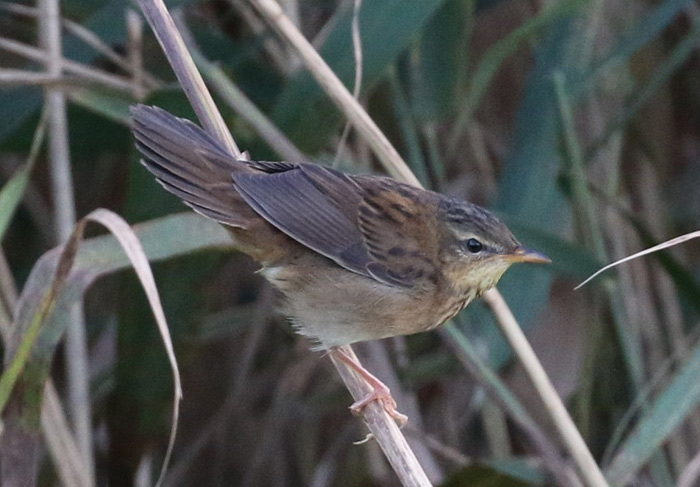
There’s an argument that this reflects coverage – after all, Shetland’s long been the subject of intensive autumn birding effort – but that’s perhaps not entirely accurate as, after all, the Norfolk coast is not entirely devoid of birders putting in the miles and the hours at this time of year too. Yet the stats don’t lie – up to the end of 2015 Norfolk lays claim to a paltry two records apiece of Lanceolated and Pallas’s Grasshopper Warbler out of national totals of 151 and 54 records respectively. Either species, therefore, remains a dearly wanted Norfolk bird.
Both are, however, arch skulkers and, as Shetland birders can attest, can lose themselves in the merest hint of cover. Finding either in Norfolk is no mean feat.
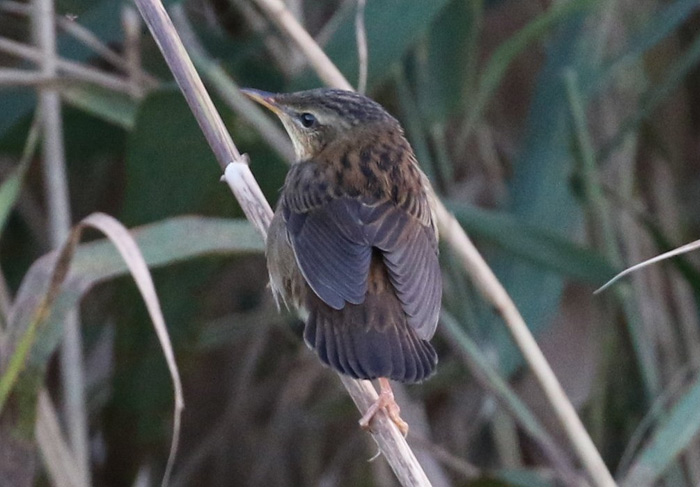
First out of the blocks was a report of a Lanceolated Warbler found on Blakeney Point on 15th, followed closely on 17th-19th by the third Norfolk record of Pallas’s Grasshopper Warbler by the sea wall at Burnham Overy Staithe. With pleasing symmetry another of the latter species was found on 17th also on the other side of the North Sea at Castricum in the Netherlands. Good enough that the Norfolk bird was found in the first place – better yet that it stuck around for a few days.
Meanwhile, heading west, both of last week’s headline sandpipers chose to linger into the new week in Dorset at Lodmoor RSPB, delighting all comers – the county’s first Least Sandpiper being particularly obliging, staying put until 19th whilst the county’s third Stilt Sandpiper stuck around until 15th.
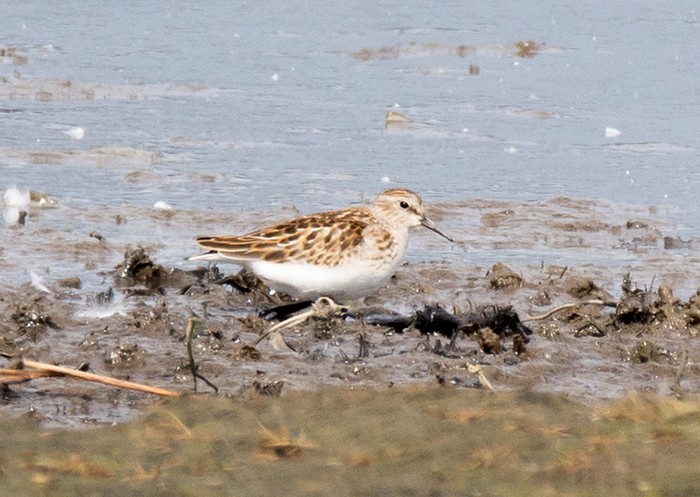
Throw in a couple of Baird’s Sandpipers and a Spotted Sandpiper in the county this week and Dorset was very much the American shorebird place to be…

Kicking off the body of this week’s Round Up is the tail-end of last week’s Seabird news – the large numbers of Leach’s Petrels that were being blown in from the Atlantic – we picked up where we’d left off, with sightings of chunky numbers being made from a wide spread of westerly headlands and, pleasingly for those who wait years for the birding planets to align thusly, along the shore of the Wirral too. Numbers peaked on 14th with around 500 birds logged, up from 300 the previous day, and falling back thereafter to some 200 on 15th and then, abruptly, down into low double figures on subsequent days. 90 seen from Hilbre (Cheshire) on 15th was a reflection of the scale of the displacement into the north-west – a displacement that, inevitably, did not end well for all the birds concerned as some fell foul of Peregerines, large gulls, or simply found themselves stranded inland – one was even retrieved from with an aircraft hangar at Blackpool airport on 13th.
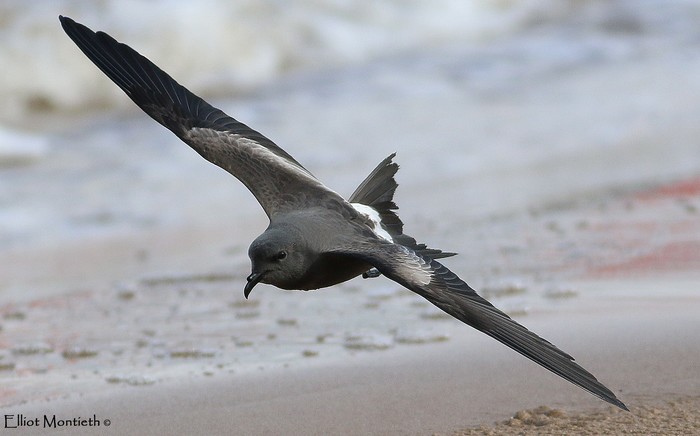
While a number of inland Manx Shearwaters also bore testimony to the extent of the wreck, shearwaters generally seem better equipped to deal with the extremes of Atlantic weather than their smaller tubenose cousins and, for the most part, numbers of the scarcer shearwaters this week remained fairly modest for the time of year.
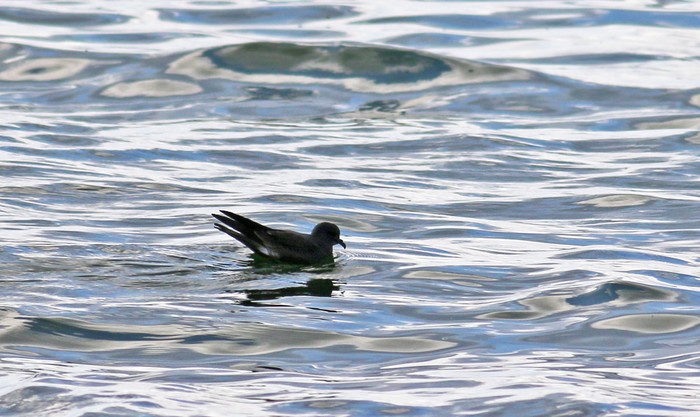
Only a handful of large shearwaters of either species were recorded. Single Cory’s Shearwaters were noted on 13th and 15th from Cley (Norfolk); on 15th from Old Nab (North Yorkshire) and Hartlepool Headland (Cleveland); off Holy Island (Northumberland) on 16th; and on 18th back in Norfolk from Sheringham.
Great Shearwaters were only slightly more numerous: singles were seen on 13th in Cornwall from Trevose Head and Pendeen, with a further sighting from Pendeen on 15th also; on 14th one was noted in East Yorkshire heading north past Hornsea and Flamborough, while in the early morning of 16th one was seen in Northumberland passing Howick, Beadnell and the Farne Islands; and one was noted passing Whitburn CP (Co.Durham) on 17th.
There was, meanwhile, still a fair showing of Balearic Shearwaters to be had, with some 100 birds logged in the course of the week from all quarters of the region – while many of these were single birds, double figure counts came from Portland (Dorset) with 13 on 13th and off the Lizard (Cornwall) on 16th with 14 birds noted that day. A particularly notable pair of sightings came from North Ronaldsay (Orkney) on 16th and 17th, with single birds noted off there – tremendous northerly records for the species.
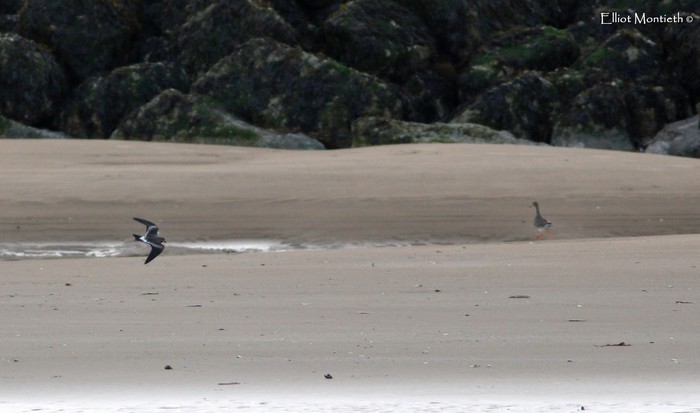
Before moving on to the skuas we need to wrap up with yet more Wilson’s Petrels recorded again this week – 2017 really being the year that keeps on giving in this regard. Single birds were seen in Cornwall on 13th from Trevose Head and Pendeen, with another one reported off the Scillonian on 17th also.
And now it’s skua time where, reflecting the general sense of movement and displacement of the last week at sea, good numbers of both Pomarine and Long-tailed Skuas alike were recorded. Starting with those Poms, we’ve got around 130 birds noted from 20 coastal counties. Many, but not all, of these were single birds – the week’s highest single site tally coming from Hound Point (Lothian) on 17th with a symmetrical 17 birds noted there that day.
Long-tailed Skuas were very nearly as numerous as a whole, with around 115 birds logged from 24 counties over the course of the week. Again, many of these involved ones or twos, with the week’s most notable daily tallies being seven birds off Winterton (Norfolk) on 13th, and five birds noted on 14th from Spurn (East Yorkshire) and Chanonry Point (Highland).
Wading into this week’s long-legged beasties, we’ve two recent long-staying regulars to start things off: the adult American Night Heron still at Dingle Gardens (Shropshire) until 18th and, in Lancashire, the juvenile Purple Heron remained at Leighton Moss RSPB until 16th. A fresh juvenile Purple Heron heralded the week’s end on 19th at Ruan Lanihorne (Cornwall).
The week began with the regular adult Glossy Ibis still at Ham Wall RSPB (Somerset) on 15th-19th, with one seen on Scilly at St Mary’s on 15th also. Meanwhile, on 16th, a possible individual was seen in flight over Walthamstow Reservoirs (London) – happily, what was presumably the same bird was seen subsequently in London at Barnes WWT and over Richmond Park in the morning of 18th – a quality London bird.
Cattle Egrets remained a national fixture this week – I wonder, in the wake of this year’s unprecedented breeding success, whether they’ll ever go back to being anything but an ongoing presence. Around 35 birds were reported in the course of the week – perhaps representing a modest increase on past weeks though, as they appear prone to wandering as the summer fades into autumn, there’s possibly some duplication of records in and amongst that weekly tally.
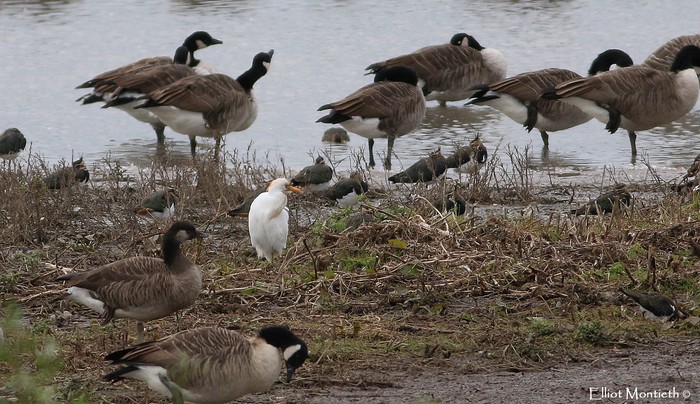
The week began with a number of recent familiar faces still settled, however, where we’d last left them: one remained in Lincolnshire at Theddlethorpe Dunes NNR on 13th; one was still at Wat Tyler CP (Essex) until 17th; singles remained in Devon at South Efford Marsh until 17th (with two there on 18th, and three on 19th) and in Cheshire at Burton Mere Wetlands RSPB until 19th; three were still at Marshside RSPB (Lancashire) until 18th; and eight birds were still in Cornwall at Walmsley Sanctuary on 15th, with five seen at Wadebridge the following day and two on 17th near Lostwithiel; and seven again at Walmsley Sanctuary on 19th.
Elsewhere, sightings came daily as the week unfurled: one was seen on 13th in Dorset at Hengistbury Head; on 14th, single birds were noted at Middleton Lakes RSPB (Warwickshire) and Pagham Harbour (West Sussex), with two present on 14th-18th in Lincolnshire at Saltfleetby St Clement. One was seen on Horsey Island (Devon) on 15th while on 16th four were noted from Pendeen (Cornwall) and two seen going to roost at Hale (Cheshire). On 17th three cropped up at Lodmoor RSPB (Dorset), with singles seen that day at Chew Valley Lake (Somerset) and Stiffkey (Norfolk), the latter single birds both being still present until 19th. The 18th also saw single birds recorded at Abbotsbury (Dorset) and Lancing (West Sussex). On 19th three were at Braunton (Devon) and a single bird flew over Crosby Marine Park (Lancashire) that day also.
We return to Chew Valley Lake for the week’s standout record amongst a total of some 60 Great White Egrets nationwide – numbers recorded at Chew ranged from a minimum of six on 13th to a peak count of 13 birds on 18th. Elsewhere, those 60 odd records were logged across 22 counties, as far north as Aberdeenshire. The week’s other notable tally came once again from Dungeness (Kent), where numbers logged peaked on 18th with seven birds there.
Spoonbills represent a similarly challenging picture where ascertaining precise numbers is concerned, not least in the attractive but capacious bounds of Poole Harbour in Dorset, where good numbers continued to be recorded from a variety of viewing points – the peak count coming, once more, from Middlebere Farm on 19th where 24 birds were seen. Elsewhere, double figures were only hit at Stiffkey (Norfolk) this week where 11 birds were noted on 17th. Nationally some 110 records came in this week, appearing to represent some modest reduction on numbers tallied in recent weeks. Adding to London’s good week with the Glossy Ibis were two spatula-faces seen at Rainham Marshes RSPB on 18th.

Cambridgeshire was the focus of the week’s sightings of Common Crane, starting on 16th when 24 were seen in flight over March and 19 at Nene Washes RSPB; on 18th 19 were at Ouse Washes RSPB with two that day at Burwell Fen. Seven were at Welney WWT (Norfolk) on 18th. Moving north, three were at Hatfield Moors NNR (South Yorkshire) on 17th, while the single bird remained another week in Shetland at Loch of Hillwell, being reported from there until 18th at least.
And so to the plastic confusion that’s White Storks - rapidly sinking, in my estimation, into that Ruddy Shelduck limbo where you know, in your heart, that some of them must be pukka, but it comes to a pragmatic point where I may, in the absence of Continental legwear that proves their wild origin, not report them at all. But for now… the dodgy green-ringed wire-hoppers remained in West Sussex at Pagham Harbour on 15th, while on 14th-16th a metal-ringed individual ranged along the Kent coast, being seen at Bockhill Farm, Dover and South Foreland. Two flew north-east out to sea over Lydd in the early afternoon of 19th.
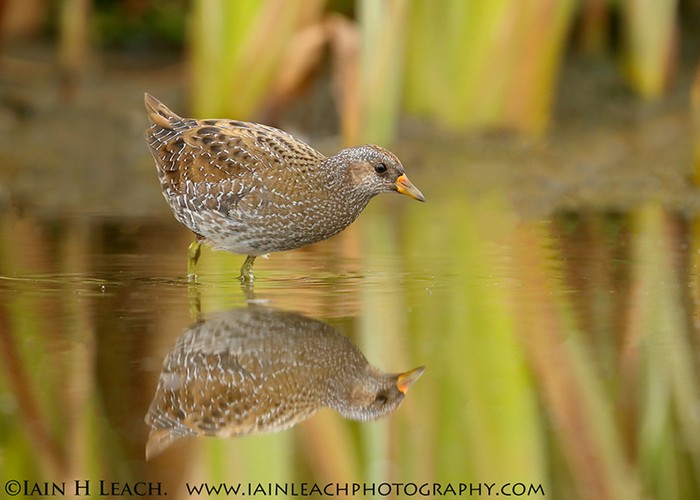
Last week’s Spotted Crake at Porth Hellick Pool on St Mary’s (Scilly) remained there until 18th, with further birds seen at Doonfoot (Ayrshire) on 13th-19th and at Hornchurch (London) on 16th-19th.

Migrant Corncrakes are always a good autumn find – this week four birds were noted, on 15th from Unst’s Baltasound (Shetland) and Sammy’s Point (East Yorkshire); on 17th at Hemsby (Norfolk); and on 18th from Martin Mere WWT (Lancashire).
The seasons were, finally, a-changing this week with hint of some wildfowl movement at last after the long summer hiatus. Pink-footed Geese were on the move and, with them, we had our first Snow Geese of the autumn making landfall in northern Scotland – Aberdeenshire claimed all of this week’s records, with one at Rattray Head on 14th-17th, and two birds (one blue, one white) at Loch of Strathbeg RSPB on 14th; the white morph remaining there on 15th also.
Orkney provided us with an eclipse drake Ring-necked Duck on Loch of Bosquoy on 16th; meanwhile the eclipse drake American Wigeon remained at Rutland Water (Leicestershire) until 19th.Finally, absent from these columns for a while, the queen King Eider reared her pretty head once more in Wales on 18th-19th, being seen on the Dovey Estuary in Ceredigion at Ynyslas.
We have to start this week’s run through the shorebird sightings in Dorset, where, in addition to the lingering Least and Stilt Sandpipers the county enjoyed a genuinely brilliant Nearctic waderfest in recent days – on 17th-19th an adult Spotted Sandpiper was seen at Abbotsbury, while Baird’s Sandpipers were on offer on Brownsea Island on 13th-16th and The Fleet on 17th-19th. Not bad going at all.
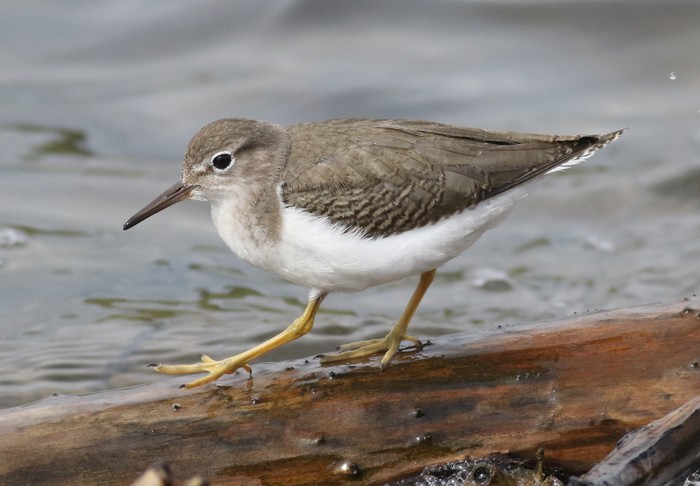
Away from Dorset it’s, pleasingly, hard to know where to begin with the rest of the week’s news, there were so many new arrivals to sift through. We’ll start, then, with Long-billed Dowitcher - the adult remained in Kent at Oare Marshes until 19th, while the week kicked off with a juvenile still in East Yorkshire at Kilnsea on 13th. Was this the same juvenile that was subsequently seen on 16th-19th at Saltfleet (Lincolnshire)? Meanwhile on 18th further birds were noted in Co.Kerry at Carrahane Strand and briefly on North Ronaldsay (Orkney).
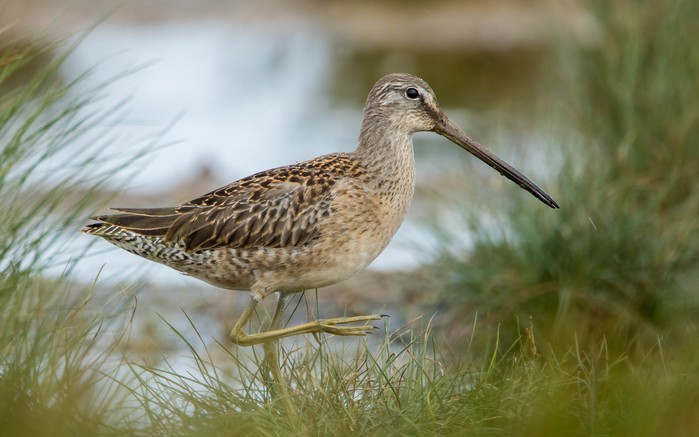
Staying Ireland, Co.Sligo, meanwhile, held onto the juvenile Hudsonian Whimbrel for a while longer, the bird being seen at Easkey again on 15th.
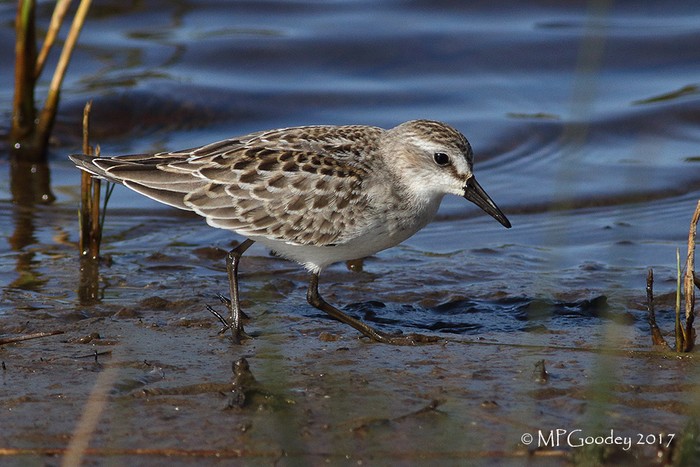
No new Semipalmated Sandpipers were found this week, leaving us to make do with three lingering juvenile birds from last week: on St Mary’s (Scilly) until 19th; on South Uist (Western Isles) at Balgarva still until 16th; and in Ireland at Smerwick Harbour (Co.Kerry) on 13th.
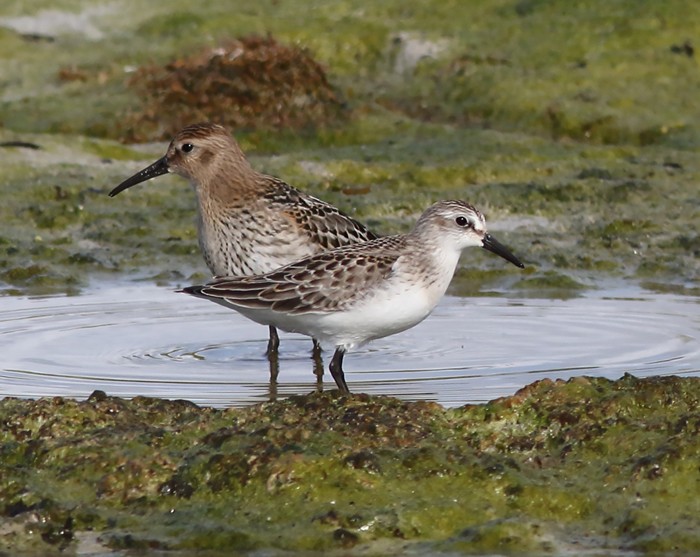
Co.Kerry provided the week’s only White-rumped Sandpiper, at Carrahane on 13th.
Baird’s Sandpipers did rather better – in addition to the Dorset bird(s), singletons were at White Holm reservoir (West Yorkshire) on 13th-15th; on the Spey Estuary (Moray) on 13th-16th; and the Muckross Estuary (Co.Cork) until 18th. Additional juvenile birds were logged at Long Rock (Co.Sligo) on 14th and in South Yorkshire at Hatfield Moors NNR on 16th.

Pectoral Sandpipers from last week remained at Cley (Norfolk) on 13th, Burwell (Cambridgeshire) and Hayle (Cornwall) until 14th, and Loch of Strathbeg RSPB (Aberdeenshire) until 15th. Abberton Reservoir (Essex) spearheaded the week’s new arrivals, with two birds on 13th-14th rising to three birds there on 15th-16th, and two remaining still on 17th. Elsewhere new birds were on St Mary’s (Scilly) on 13; Loch Hallan on South Uist (Western Isles), Titchwell RSPB (Norfolk) and Frampton Marsh RSPB (Lincolnshire) on 14th; Skinflats Lagoons RSPB (Forth) and Thursley Common (Surrey) on 16th – the latter site hosting two birds that day, with one still there on 17th; at Maxey GPs (Cambridgeshire) on 17th, with single birds that day in Ireland at Quoile Pondage NR (Co.Down) and at Tacumshin (Co.Wexford); on 18th-19th at Moor Green Lakes LNR (Berkshire); and on 19th at Pulborough Brooks RSPB (West Sussex).

An unconfirmed report of a Broad-billed Sandpiper at Tophill Low NR (East Yorkshire) on 15th would have been Yorkshire’s second-latest ever record had it been firmed up.
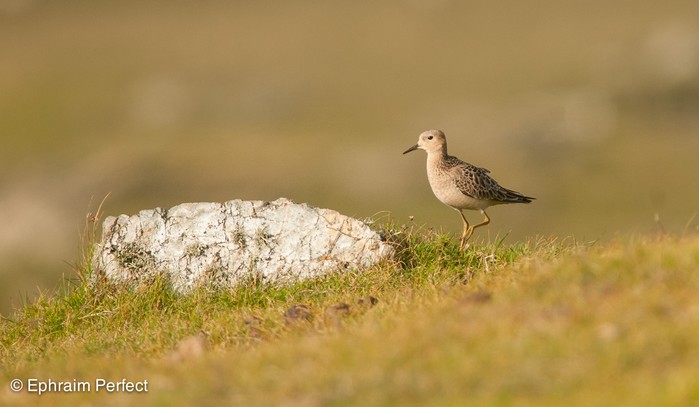
Enough Buff-breasted Sandpipers turned up this week to inspire me to consider abandoning Whalsay for the short-cropped turfy headlands of the west side of Shetland – there are, surely, more out there waiting to be found. Unless, that is, the Western Isles has a monopoly on them as, for a while this week, it certainly began to look that way…

The week began there with one still at Ormiclate on South Uist on 13th-16th, with further sightings coming from South Uist in the course of the week: three birds at Loch Hallan on 14th; and singletons at Bornish on 15th and Balgarva on 16th. Meanwhile on North Uist things got a little silly at Baleshare where two birds on 13th dipped to a single bird on 15th before burgeoning to an actual flock of five Buff-breasted Sandpipers there on 18th.
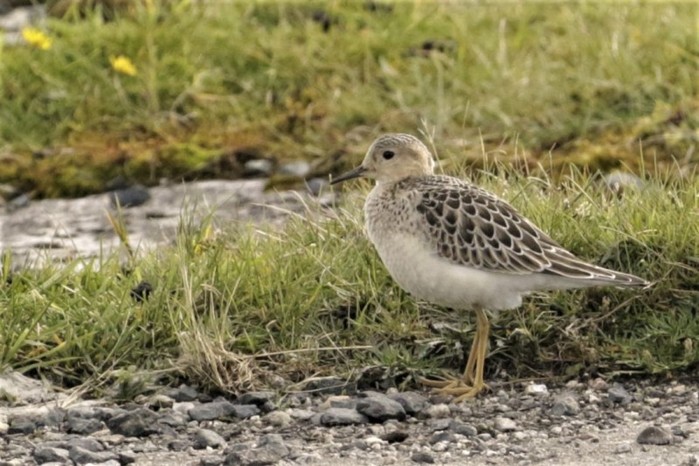
Elsewhere sightings came from Myroe (Co.Derry) on 13th-18th; a popular bird on Portland (Dorset) on 13th-15th; on Bardsey (Gwynedd) on 15th-16th; on Davidstow Airport (Cornwall) on 16th-19th; on Tiree at Loch Bhasapol (Argyll & Bute); on 17th still on Valentia Island (Co.Kerry), and on 19th at Sennen Cove (Cornwall). A further possible bird was reported on 19th from Rye Harbour (East Sussex).
The Lesser Yellowlegs remained in Angus at The Lurgies on the Montrose Basin until 16th.
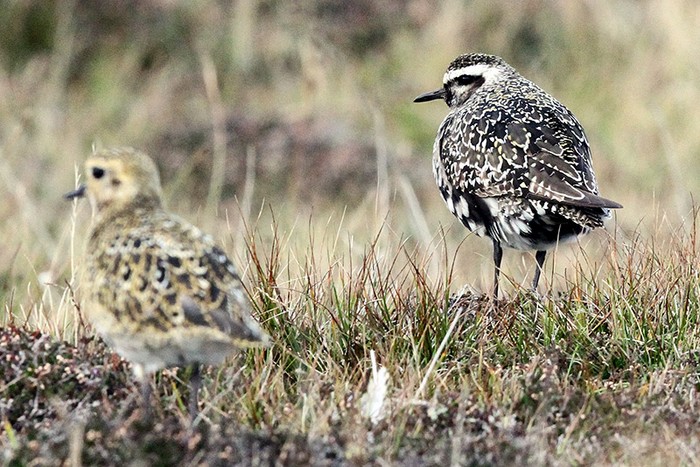
All of this brings us to my absolute highlight of the week - American Golden Plover is on my house list: the 179th species, and completely eclipsing the mainland Shetland Black-billed Cuckoo for my affections. Not so much ‘club before country’ as ‘house before county’ in footballing/listing terms...
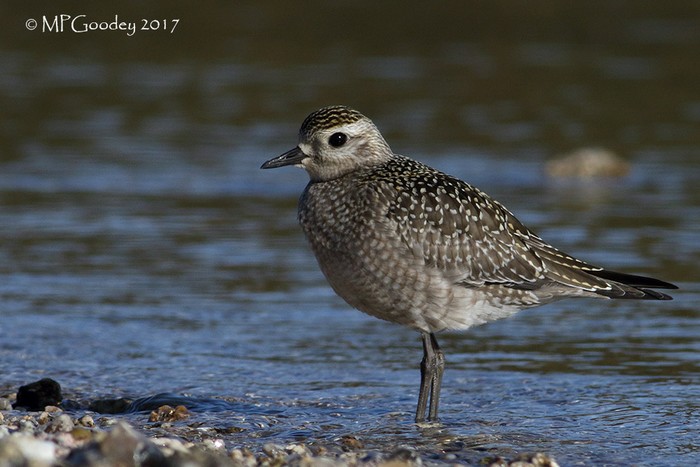
Anyway, this means that last week’s star-spangled adult American Goldie remained on Whalsay (Shetland) until the evening of 13th. Others were seen all this week at Myroe (Co.Derry) and on St Mary’s (Scilly); on Lewis (Western Isles) on 14th-15th at Carloway and Shawbost; and on Holy Island (Northumberland) on 15th.
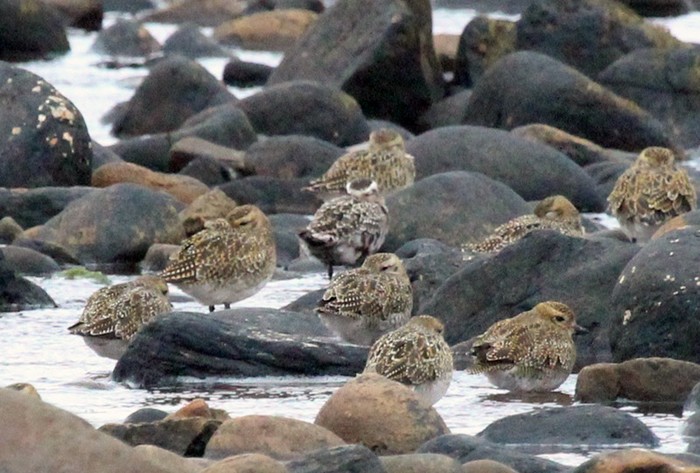
Red-necked Phalarope sightings this week nudged up into double figures, with 11 birds in all recorded. One remained in Cheshire at Frodsham until 15th; on 13th birds were seen at Pendeen (Cornwall) and Salford Priors GPs (Warwickshire), the latter bird remaining until 15th. On 14th birds were found inland at Scotney GP (Kent), Staines Reservoir (Surrey), and Burwell (Cambridgeshire), the latter bird also remaining until 15th. Birds lingered at Cley and Titchwell RSPB (Norfolk) on 16th-17th, with one at Minsmere RSPB (Suffolk) on 16th-19th and one in Lincolnshire at Covenham reservoir on 19th. In Ireland one was at Tacumshin (Co.Wexford) on 16th.
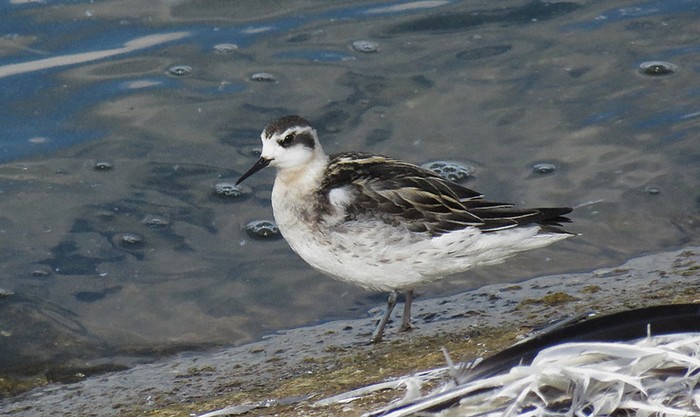
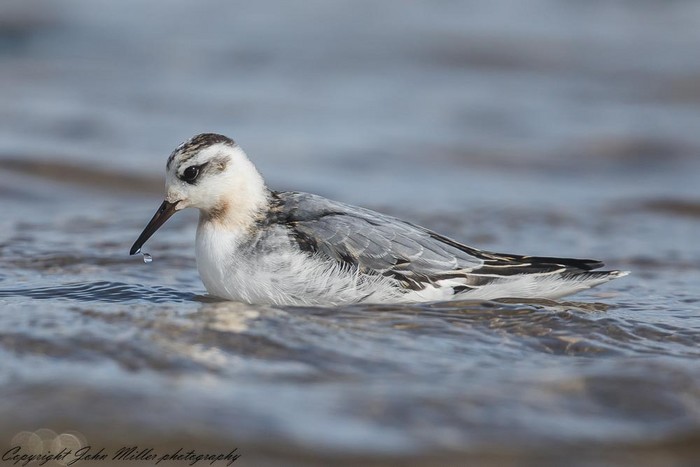
Last, but by no means least, we come to Grey Phalaropes which, in common with Leach’s Petrels and Sabine’s Gulls were the numerous fall-out of the windy conditions that ushered in the new week. Around 250 birds in all were logged over the course of the week, the peak in sightings coming on 13th-14th with 80 and 120 birds respectively logged on those two days alone – St Ives (Cornwall) on 14th accounting for no fewer than 37 of that day’s birds. The real story of the week, from a birder’s perspective, was perhaps the numbers that were thrown inland and subsequently found on freshwater bodies – on 13th alone 17 birds were logged on freshwater in 13 counties. Bad weather for birds is, selfishly, good weather for birders…


Which brings us, rather neatly, onto Sabine’s Gulls which enjoyed another strong showing in another storm-lashed week, with a pattern of occurrence mirroring that of Grey Phalarope - numbers peaking on 13th-14th with around 130 birds seen on those two days alone, with a maximum count of 11 past Pendeen (Cornwall) on 13th. These two days would prove to represent over half of the week’s total of some 200 sightings – an overall tally down by a third on last week’s haul of 320 Sabs, but still a goodly haul of this most charismatic of gulls. Inevitably it was those that got blown inland that attracted the most attention – notably the juvenile seen at Daventry reservoir CP (Northamptonshire) on 13th-14th.
It felt like somebody had flicked a switch this week where Ring-billed Gulls were concerned – where formerly there’d been none, suddenly here they were – a quintet of them in Ireland, being single adults on 13th at Timoleague (Co.Cork) and Nimmo’s Pier (Co.Galway), and on 14th at Doorly Park (Co.Sligo); with a second-summer individual also at Doorly Park on 15th, and a further adult on 19th at Block Rock (Co.Louth).
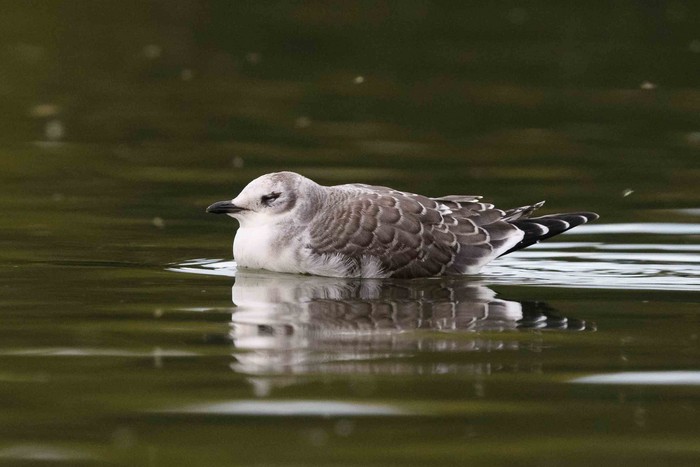
With no sightings coming from Devon or Kent this week it fell to East Yorkshire to return our only report of Bonaparte’s Gull - one reported heading north past Kilnsea Wetlands in the evening of 13th.
White-wingers remained thin on the ground – juvenile Glaucous Gulles being seen on Shetland on Unst on 17th and Out Skerries on 19th, and the second-winter bird still in Highland at Dunnet Bay on 19th; and single Iceland Gulls logged on 14th at Shingle Street (Suffolk) and on 16th at Rosslare (Co.Wexford).

The adult White-winged Black Tern remained in Hertfordshire at Tyttenhanger GPs until 17th, with a probable juvenile reported past Cullercoats (Northumberland) on 17th also.
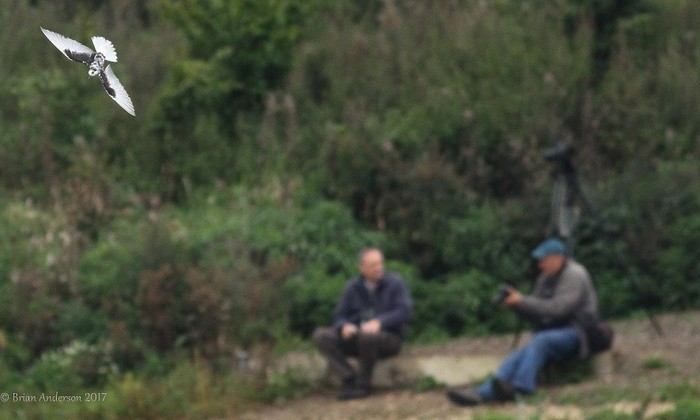
A Gull-billed Tern was noted off Pendeen (Cornwall) in the early afternoon on 13th, while in Co.Louth the adult Forster’s Tern was once more seen from Soldier’s Point until 18th at least.
We enjoyed a little more variety in the Raptor sightings this week, with a light sprinkling of most things – starting with the adult female Snowy Owl again in Co.Mayo on Tarmon Hill on 14th and again on 19th, and belated news of an immature male on Benbecula (Western Isles) on 7th September on the shores of Loch Fada. On 19th a pellet and a feather found at Holborn Head (Highland) hinted at the recent presence of a third individual…
An adult White-tailed Eagle was noted flying north over Bressay (Shetland) in the late morning of 19th.
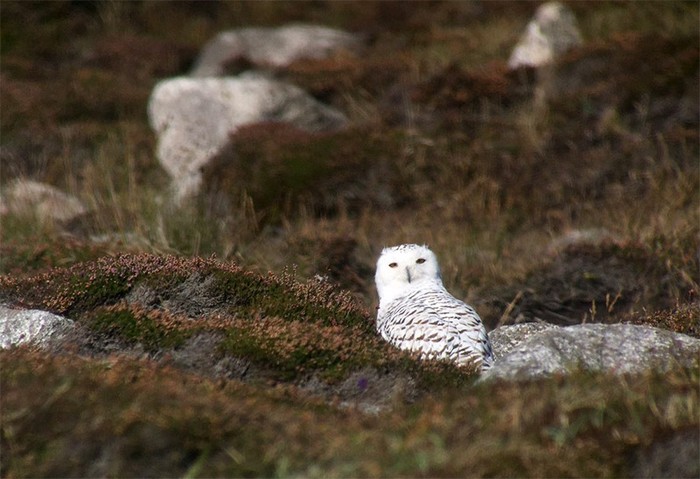
A succession of Honey Buzzards were less ephemeral: birds were seen on 14th over Ipswich (Suffolk) and on 15th over Richmond Park (London); on 15th and 16th both Dungeness (Kent) and Beachy Head enjoyed successive daily singletons passing overhead; one was seen at Wantage (Oxfordshire) on 16th; one was back in Kent over Cliffe Pools RSPB on 18th, while on 19th birds were seen over Leeds (West Yorkshire) and Bermondsey (London).
Away from the wonderful craziness that’s a lingering American Redstart and a newly arrived Black-billed Cuckoo, things began to feel a little more traditionally autumnal this week with the (modest) beginnings of both numbers and some variety of species of an easterly origin turning up.
We’ll start then with the warblers and, proving that I should definitely be careful what I wish for, Yellow-browed Warblers started to flood into the country this week, moving rapidly from the manageable individual sightings category into the running out of fingers and toes and moving onto using a calculator to keep track of them territory.
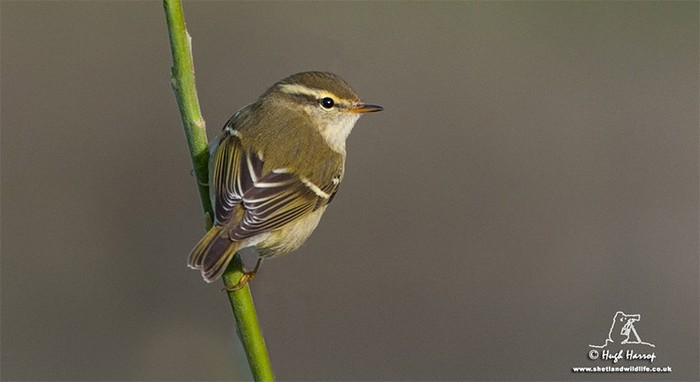
Approximately 220 birds were logged in the course of the week, with what’s now becoming their usual pattern – an initial flush down the British east coast but, shortly afterwards, individuals rapidly penetrating much further west – sightings came inland from London this week and then across the south-coast, with birds found in the Cornish valleys and on Scilly too. There’s seemingly no eastern vagrant that disperses quite so assertively nowadays as Yellow-browed Warbler. I give it a fortnight at the outside before we’re logging them in at least the high hundreds in the weekly Round Up.
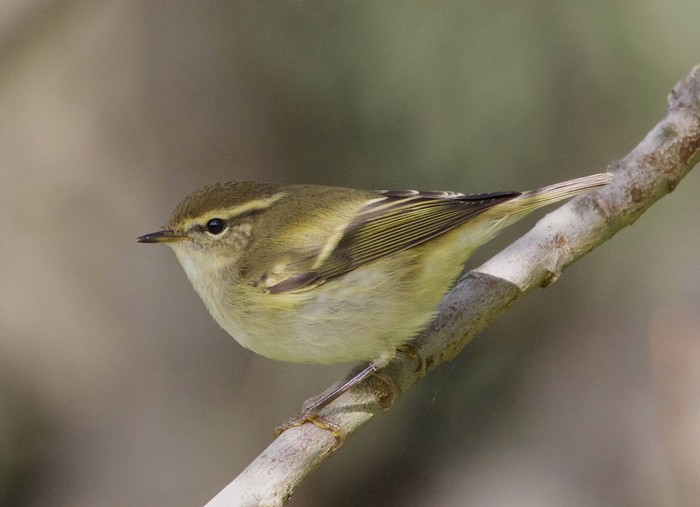
That other tradition autumn staple, Barred Warbler, began to gain a little traction too, with a predictably easterly pattern of occurrence skewed only by one seen on 16th in Cornwall at allotments at Penberth. North Ronaldsay (Orkney) heads our other records with one there on 13th still, one trapped and ringed there on 16th, two birds present on 17th and one remaining on 18th. Further sightings came from Exnaboe (Shetland) and Portknockie (Moray) on 13th; Spurn (East Yorkshire) on 14th and 17th-19th; Fair Isle (Shetland) on 15th-19th; Papa Westray (Orkney) on 16th and Marske (Cleveland) on 16th-19th; on Unst (Shetland) on 17th-18th; on 18th from Saltburn (Cleveland) and Flamborough (East Yorkshire); and on 19th from South Gare breakwater (Cleveland) and Papa Westray (Orkney).
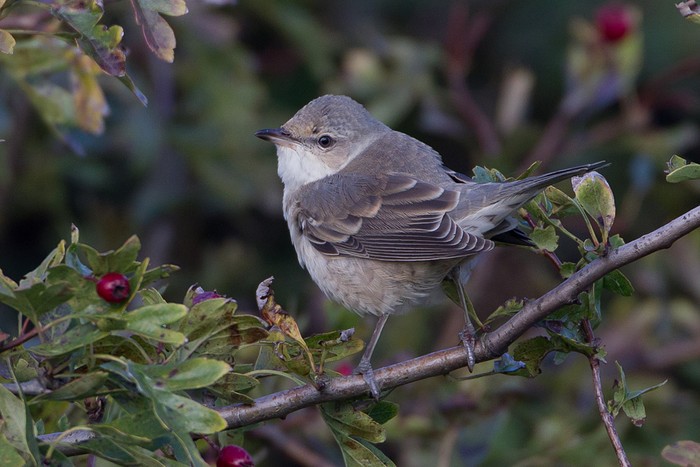

Shetland provided two of the the week’s four Arctic Warblers, with individuals found at Exnaboe on 13th and Eshaness on 16th; the remaining birds being seen on 17th at Easington (East Yorkshire) and on 17th-18th in Wells Woods (Norfolk).
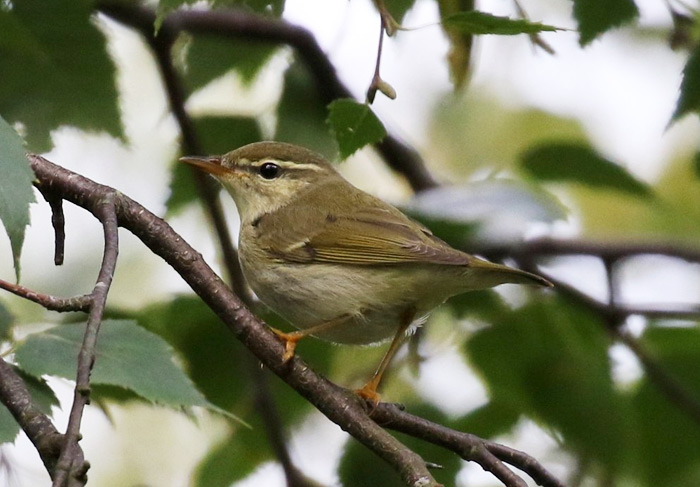
Greenish Warblers were similarly subdued with birds found on 16th at Easington (East Yorkshire); on 16th-17th at Druridge Pools (Northumberland); and on 17th at Spurn Point (East Yorkshire) and Seabrook (Kent).
Kent also provided a brief, rather early Dusky Warbler on 18th at Chambers Wall. While September sightings aren’t unknown, the species tends to peak in October and November, so we can confidently expect more in the weeks to come even if more aren’t immediately forthcoming.
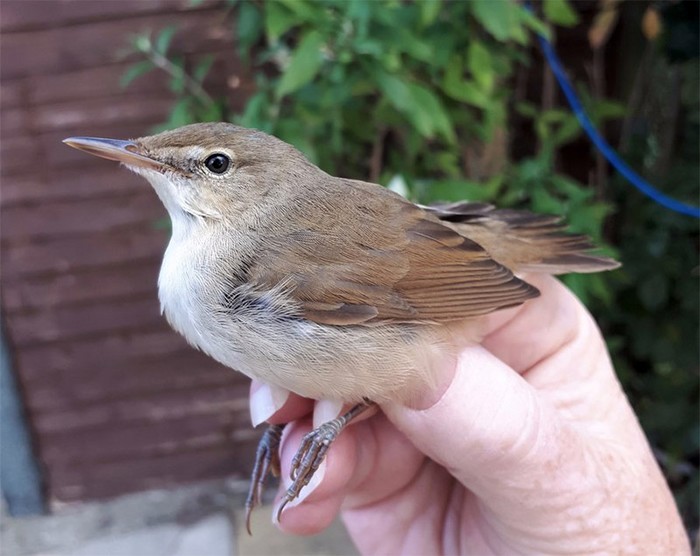
Also very much in the pipeline for the coming weeks are Blyth’s Reed Warblers - one was found in Kent on 16th at Hope Point, with another trapped and ringed in the county at Sandwich Bay Bird Observatory on 19th.
A Marsh Warbler was trapped and ringed on North Ronaldsay (Orkney) on 17th, with subsequent sightings on 18th at Sammy’s Point (East Yorkshire) and on 19th on Fair Isle with a further possible that day in Norfolk at Gramborough Hill.
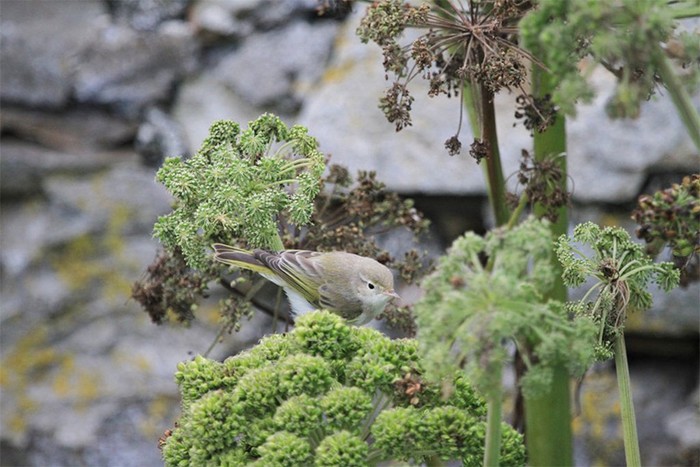
Fair Isle had already enjoyed a good fall earlier in the week on 17th, with a number of notable passerines seen that day – the cherry on this particular cake surely being a Western Bonelli’s Warbler found at Lower Stoneybrek – only the 4th confirmed record of the species for the island, with one further unattributed Bonelli’s sp record also. A further Western Bonelli’s Warbler was discovered on 19th at St Abb’s Head (Borders).
Also found on the island on 17th was Fair Isle’s 19th Melodious Warbler, and the first for the island since 2013 – still present as the week ended on 19th.

A probable Icterine Warbler was seen on 18th at Marton Mere LNR (Lancashire), but not subsequently.
Fair Isle also enjoyed a Red-breasted Flycatcher on 17th; other birds this week were logged on Spurn (East Yorkshire) on 16th-17th (trapped and ringed in the evening of 16th) and Kilnsea on 17th-19th, and Blakeney Point (Norfolk) on 18th-19th; and on 19th briefly in a garden in Plympton (Devon) and trapped and ringed on Orford Ness (Suffolk).
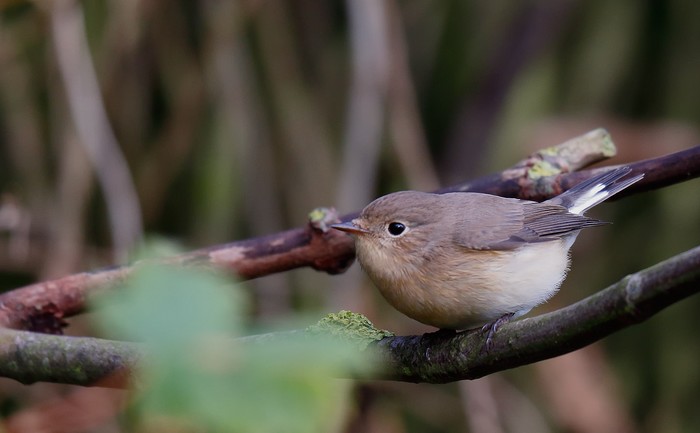
Back to Fair Isle on 17th and, this time, a Citrine Wagtail to report; with the week’s other confirmed sighting being at Minsmere RSPB (Suffolk) still on 13th-16th, and a further possible bird being reported on 15th from Arlington reservoir (East Sussex). A Blue-headed Wagtail was reported from Church Norton (West Sussex) on 15th, with a Red-rumped Swallow also seen there – somebody having a good day on the south coast.
A Pallid Swift was reported over Kingsdown (Kent) on 14th.
By this stage it’ll come as no surprise whatsoever that the week’s first Bluethroat was seen on Fair Isle on 17th-19th, with a further bird trapped and ringed on North Ronaldsay on the latter date.

A brace of pipits hinted at things to come this week: a Tawny Pipit was logged in Dorset at Brownsea Island on 14th, while a Red-throated Pipit was seen on Tory Island (Co.Donegal) on 17th.
We return now to Scotland and Tyninghame Bay’s John Muir Country Park (Lothian) where, once again, the Short-toed Lark was seen on 14th-16th though not – for now, anyway – subsequently.
The Hoopoe of previous weeks remained settled in Dorset on Portland in gardens at Southwell until 17th, while one was found on Papa Westray (Orkney) on 19th and one was present that day (possibly for several days previously too) at Wakefield (West Yorkshire).
Also settled for a while longer was the juvenile Woodchat Shrike in Gloucestershire at Chipping Sodbury Common, present until 19th.

Numbers of Red-backed Shrikes remained low for the time of year, with a handful to report this week: one remained on temporary territory in the allotments at Girdle Ness (Aberdeenshire) until 19th, while one was still in Kent at Reculver until 14th; one was at Bempton Cliffs RSPB (East Yorkshire) on 17th-19th, while in Shetland birds were on Fair Isle on 16th and at Sandwick on 19th. A further bird was at Donna Nook (Lincolnshire) on 19th.

There was a similar seasonal paucity of Wrynecks too this week. One remained on Portland (Dorset) in the vicinity of the Observatory quarry until 17th, with two reported from the Top Fields on 15th, and a further bird seen at Weston on 18th. One remained faithful to Shingle Street (Suffolk) on 13th-18th; while other lingerers from last week remained at Kilnsea (East Yorkshire) until 13th and Mwnt (Ceredigion) until 14th. Fresh birds were seen at Land’s End airport on 14th; on Blakeney (Norfolk) on 15th-17th; on 16th at Aldeburgh (Suffolk), Hitchin (Hertfordshire), and Wembury Point (Devon); and on 17th at Durlston CP (Dorset) and Harpenden (Hertfordshire), and on 17th-19th on Bardsey (Gwynedd). On 19th one was at Lodmoor RSPB (Dorset).

A Golden Oriole was on Whalsay (Shetland) on 17th – by no means an annual bird for the island, so appreciated by the local birders.
Some juvenile Rose-coloured Starlings were new arrivals, with birds seen at Kendal (Cumbria) on 15th-19th and in Norfolk at Snettisham on 17th and Heacham on 18th.
Once again Shetland enjoyed the lion’s share of the week’s Common Rosefinches, with a fair scatter of them throughout the archipelago: on Fair Isle on 13th-17th, with three birds there on 19th; in the Hestingott playpark on 14th; three birds on Unst on 16th, with one still there the following day; and at Hoswick and on Whalsay on 17th also. Orkney’s North Ronaldsay had two birds on 13th, with one there on 16th, and one on South Ronaldsay on 17th. One on St Agnes on 17th-19th proved to be Scilly’s most interesting passerine this week, while further sightings came on 18th from the Isle of May (Fife) and Flamborough (East Yorkshire), and on 19th on Great Ormes Head (Conwy) and Out Skerries (Shetland).
The Isle of May also hosted a Little Bunting this week on 17th-19th, with another on Out Skerries (Shetland) on 19th. Fair Isle meanwhile had a bunting double bill on 17th, with individuals of both Little and Rustic Buntings present on that special day.

We’ll finish off with Ortolan Buntings, starting on Shetland’s Unst where the male bird remained at Norwick until 16th while Orkney’s North Ronaldsay enjoyed one on 13th-14th. Meanwhile down on the very south coast another male was seen in the Top Fields at Portland (Dorset) on 17th, with one reported over Land’s End (Cornwall) that day also – and one subsequently at St Levan on 19th.
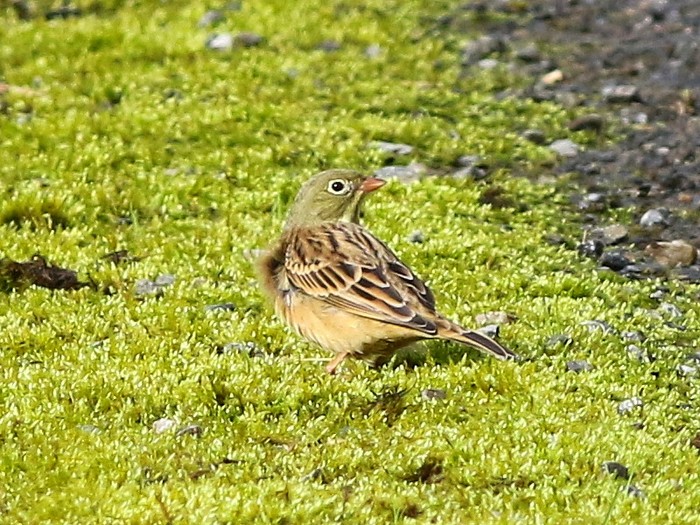
Casting our eyes a short distance overseas we find a familiar (though, annoyingly, not quite familiar enough) friend once again in the Channel Islands – yes, the American Royal Tern was once again in Guernsey on 13th. How very annoying.
What was, presumably, one of the two Swinhoe’s Petrels seen there last week was once more noted off Eilat (Israel) on 15th. Meanwhile on dry land there the Yellow-billed Stork was once again in the Herod Valley on 17th.
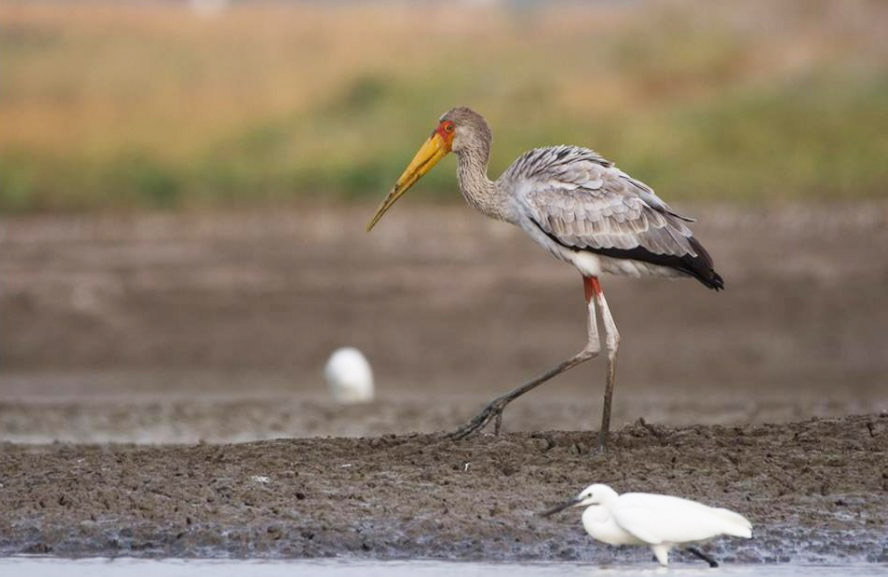
Heading back a little closer to home, a Masked Shrike was found in Italy on 17th in the Parco Nazionale dell Aspromonte. Another one is surely overdue here in the UK now…
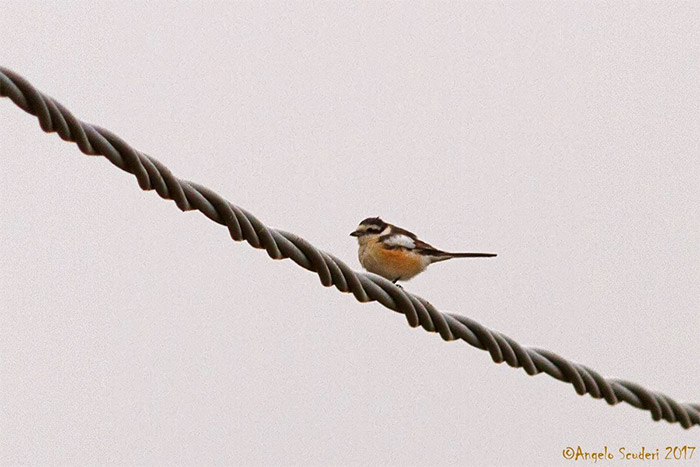
Closer, and more tantalising still, was the Black-shouldered Kite in the Netherlands at Dannemeer on 18th.
Well north-west of us, a drake American White-winged Scoter was seen in Faroe off Sudaroy on 16th.
Further offshore still from a British perspective, a Brown Booby was seen on 14th from Gran Canaria (Canary Islands).
Meanwhile, all the way out on the Azores, the eclipse drake Redhead was still on Terceira at Paul da Praia on 17th.
Another gaze into the RBA crystal ball this week reveals a swirling kaleidoscope of possibility in the coming days…
…possibility that, at the early stage of autumnal proceedings, could still deliver the goods from practically any point of the compass.
More westerlies will surely drop more American waders and another passerine or two our way – we’re pretty much guaranteed more Baird’s and White-rumped Sandpipers, but five past records of Upland Sandpiper in the coming week suggest it’s time to keep an eye out for this big-eyed, pin-headed shorebird in a coastal field near you.
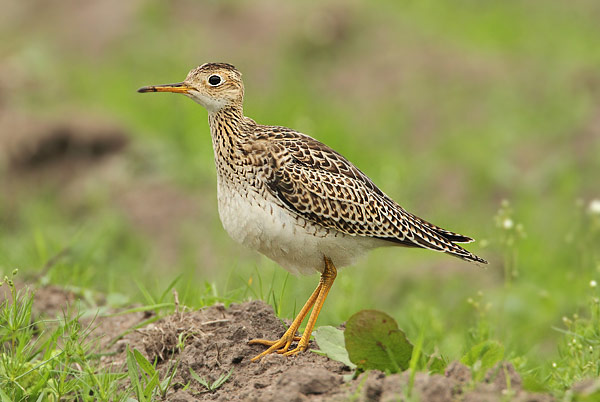
Where passerines are concerned, if we have westerlies and no American passerine then I’m a Dutchman. Strong contenders have to be American Buff-bellied Pipit and Red-eyed Vireo, and I fancy we’re due a Blackpoll Warbler…
But look to the past and this week really is prime-time for the crazy, hyper-saturated American passerines – Britain’s one and only Yellow-throated Vireo in the Kenidjack valley on 20th-27th September 1990 springing immediately to mind; as does a dazzling array of wacky warblers, not least of them being the delectable Magnolia Warbler found on Fair Isle on 23rd September 2012 – a particularly painful memory for me as I’d only just flown off the island that day and couldn’t get back…
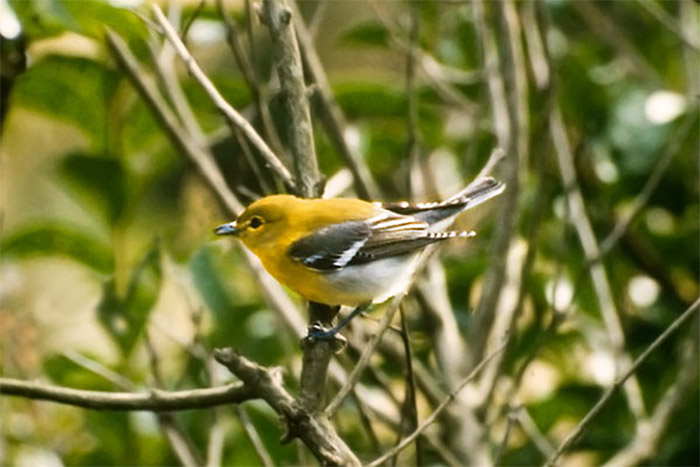

Meanwhile, this past week gently reminded us that there’s plenty that can come from the east. The floodgates haven’t opened – yet – but given half a chance, they will.
Rare pipits are our bread and butter this week, with plenty of past records of east coastal Olive-backed, Red-throated and Pechora Pipits. Warblers too should be on our minds – once impossible in the field, we’ve all got the hang of Blyth’s Reed Warbler nowadays, and they’re just the commonest of the rarer possibilities in the coming days.
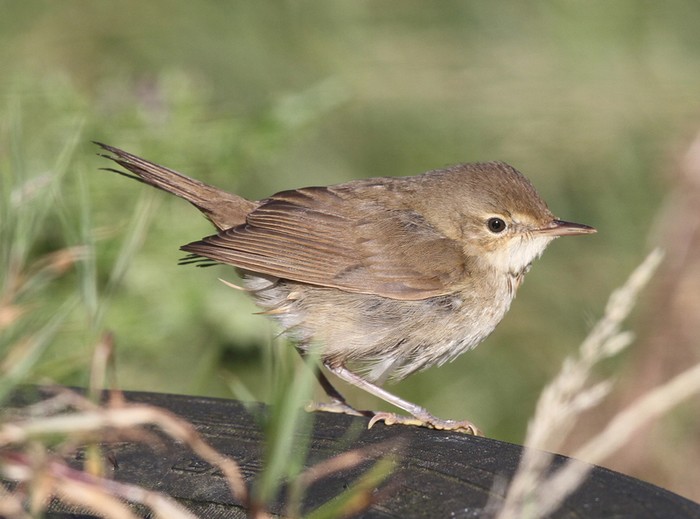
22 accepted prior British and Irish records of Booted Warbler from the coming week suggest we can dare to aim a little higher than that, though – and the likes of Sykes’s shouldn’t be far from our minds.
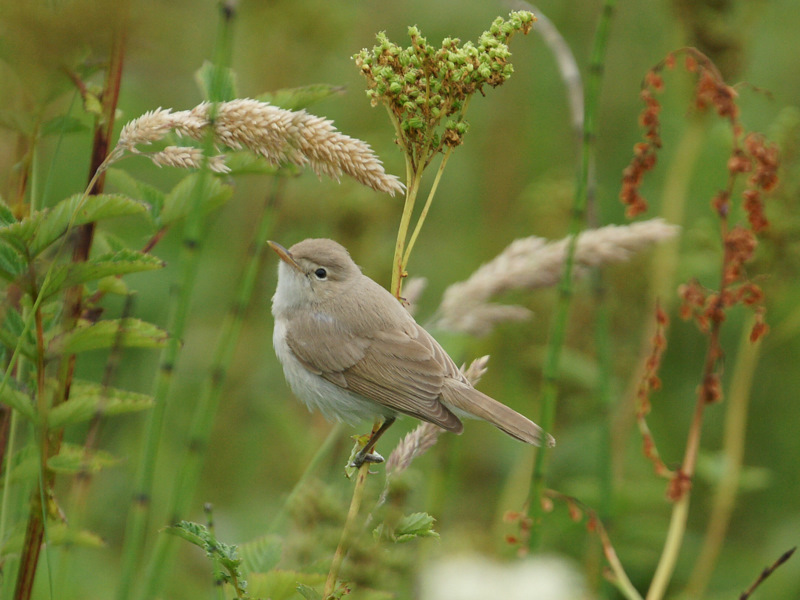
So much for predictions though. The coming week has potential to throw us the genuine curveball, the unexpected agent of chaos that nobody, really saw coming. It won’t be another Little Blue Heron like the one that graced Co.Galway’s Barnaderg Bay for a month from 24th September 2008 (though we can hope), but the coming week could so easily deliver a bolt from the blue…
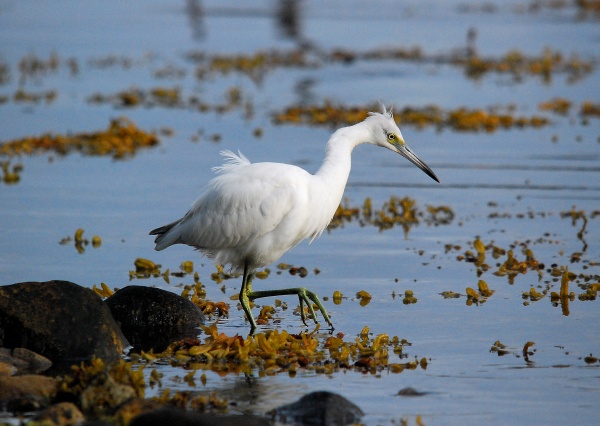
Jon Dunn
20 September 2017
Share this story











